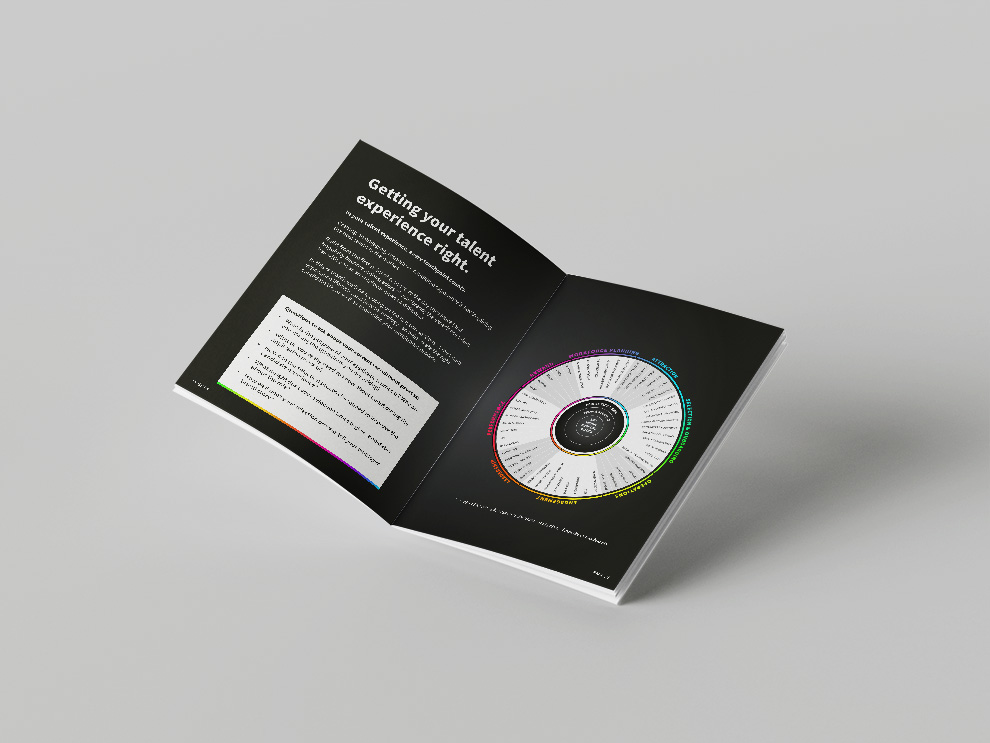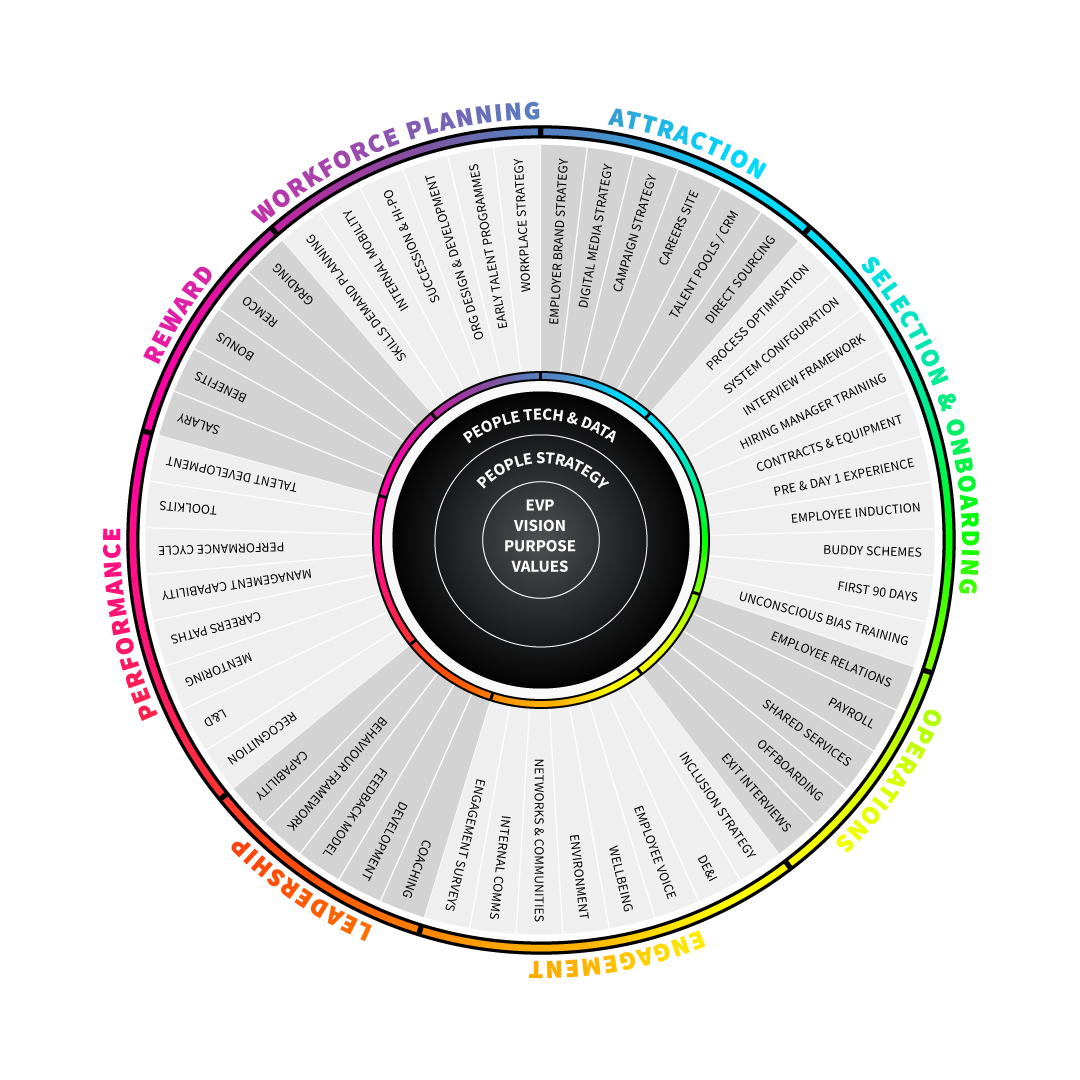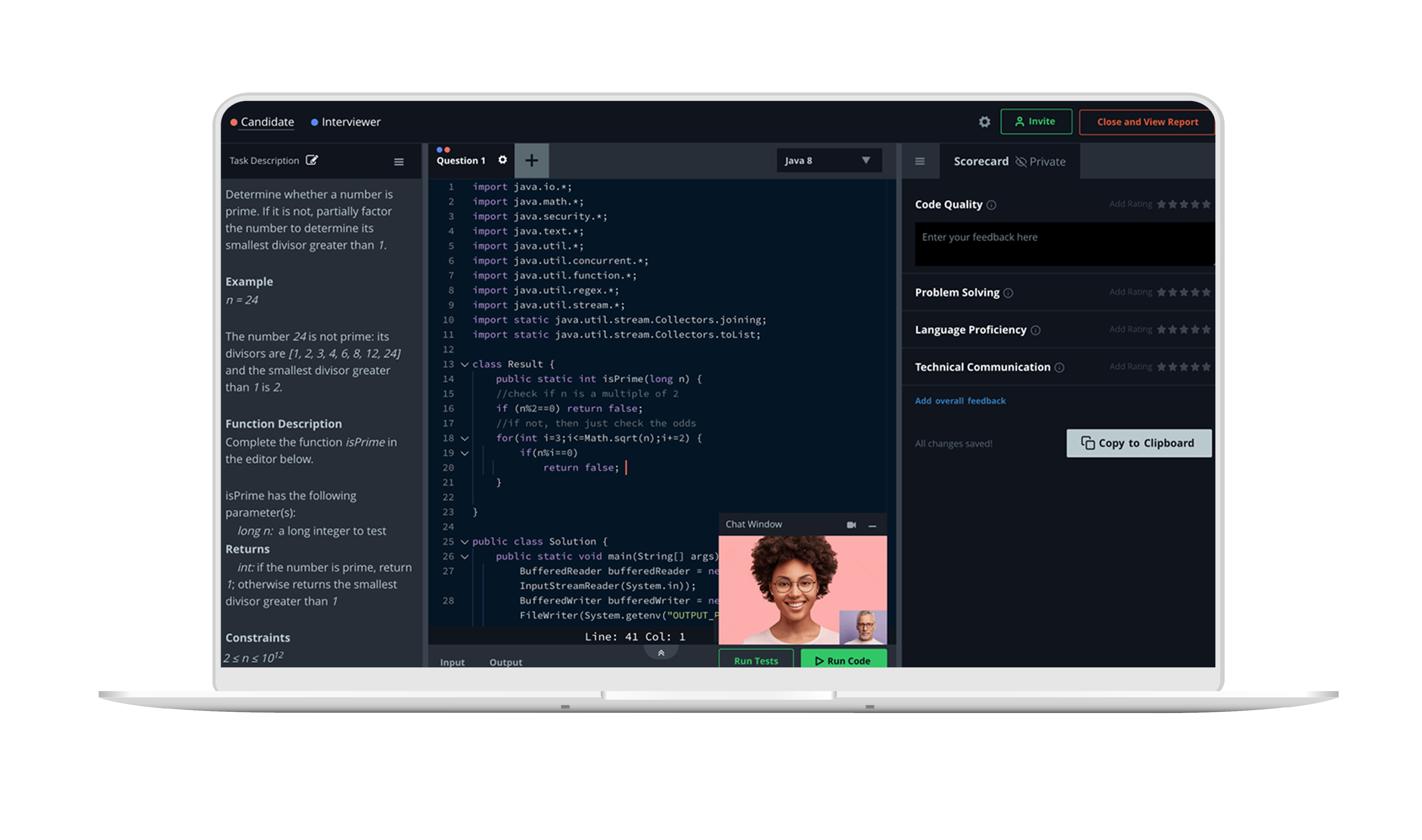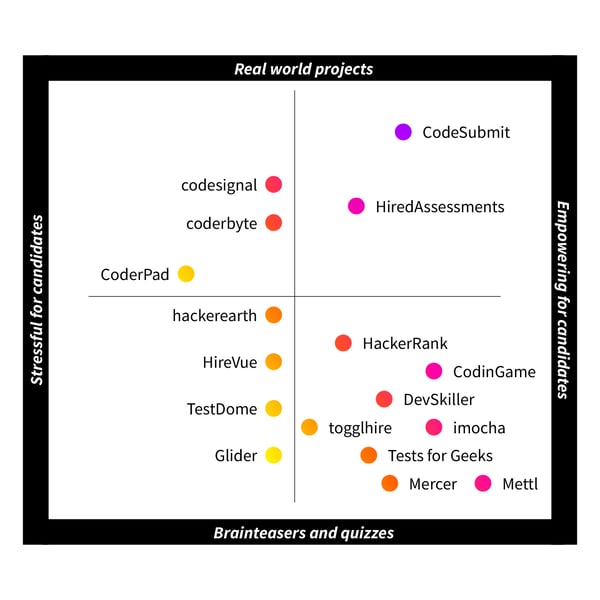Cognitive abilities
E.g. reading comprehension and problem solving

In your talent experience, every touchpoint counts.
Crafting an engaging, responsive candidate experience is key to gaining the best talent in the market.
Right from the first point of contact, to the day they leave (and hopefully become ambassadors of your brand) the experience talent has with you as an employer makes a difference.
In this research we’ll be focusing on the first two sections of the talent experience lifecycle, and how technology can help create the right
candidate UX, as well as streamline your recruitment process.
1. What is the purpose of your application process? Why are you asking the questions that you are asking?
2. What do you really need to know about talent during the application process?
3. How can the selection process be refined to improve the candidate experience?
4. What insight does your selection process give candidates about the role?
5. How well does your selection process tell your employer brand story?

We've worked with, and analysed, some of the biggest employers in technology. There are some key behaviours, tools and mindsets that the best have in their approach to selection:
Some real life examples of these behaviours at work:
Events at talent competitors, leveraging meetups. hiring manager networks and generating referrals.
Proven uplift in response rate (average increase of 15%). Increased conversion to interview and offer from headhunting activity.
Objectives aligned to qualitative sourcing, engagement and conversion. SMEs in the building of talent communities and coaches in executive-led community nurturing.
Well-written and inclusive job adverts, campaigns and all candidate communications. Measure and report on DE&I data throughout sourcing, engagement and talent acquisition processes against market benchmarks.
Advanced recruiting technologies and AI is transforming the recruitment function. The top employers of today are using smarter recruiting technology to refine the process and improve the experience they offer both candidates and hiring managers.
So, we’ve talked a lot about recruitment technologies. But, what actually are they?
Modern recruitment technology can be broadly split into six major areas.
The last two, candidate assessment tech and artificial intelligence, are particularly key in the selection part of the talent experience.
An ATS helps you manage the entire end-to-end recruitment process by allowing you to track candidates and organise them into one central database.
Recruitment marketing technology leverages marketing tools for the purpose of sourcing more candidates.
Predictive analytics involves using data to forecast the future in order to make better decisions.
From remote interviews to EVP content, video has become a differentiating factor for recruiters looking to stand out.
Allows hiring teams to build screening tests tailored to each role. You can issue the tests to candidates either before or after shortlisting to assess their suitability.
Artificial intelligence (AI) uses computers to imitate the cognitive abilities and skills of humans in the talent experience.
Recruiting technology and tools are used throughout the selection process in each stage. Generally, they can be bucketed into three key areas:
Chatbots: aid communication and problem-solving for candidates.
CV screening: initial screening to narrow applications and provide real-time feedback.
Assessment: screen suitability at early stage.
CV screening: using AI and machine learning to automate CV shortlisting, saving recruiter and hiring manager time.
Assessment tools: assess a variety of skills / behaviours to measure suitability.
Remote interviewing
Automated scheduling: to improve communication and candidate experience.
Some example selection tools:
What is it?
Skills based remote interviewing and assessments.
What do they do?
Leverage iMocha's remote-ready platform, comprehensive skills library, AI-enabled proctoring, video assessments, and insightful reports to assess and hire the best talent from anywhere.
Who uses it?
Capgemini, Wipro, Cognizant and Ericsson
What is it?
Soft-skills remote assessment tool
What do they do?
Clevry assessments provide powerful insights into your candidates’ personality, ability and motivational drivers within the workplace. Gain a more well-rounded view of your future talent and their ability to perform in the role.
Who uses it?
ASDA, M&S, EY, Santander
What is it?
Replaces traditional CV screening with remote screening tests.
What do they do?
Test candidates for job-specific skills like coding or digital marketing, as well as more general skills like critical thinking. Can be skill-based assessments or recorded video responses, which are automatically scored and ranked.
Who uses it?
H&M, Revolut, Sony, EY
What is it?
Specialist in automating high-volume recruitment.
What do they do?
Harver is a pre-employment assessment tool that uses an AI algorithm to help predict the quality of hire. They measure the applicant’s culture fit, soft skills, and ability to succeed at the job; assessments, remote interviews and reference checking.
Who uses it?
Booking.com, Lidl, McDonalds, Valvoline
What is it?
High-volume; pre-hire assessment & experience simulation.
What do they do?
Unlike traditional assessments, ThriveMap measures behaviour in a real-work context by taking candidates through a “virtual shift” experience of what a typical day in the role or company looks like.
Who uses it?
Belron, Cote Brasserie, Safelite
What is it?
Blends psychometrics and technology.
What do they do?
The Predictive Index has a four-step framework that they use to ensure that a company’s business strategy matches its people skills: Design, hire, inspire, and diagnose. Focuses on behaviours.
Who uses it?
Canon, Subway, IBM, Nissan
Artificial intelligence (AI) uses computers to imitate the cognitive abilities and skills of humans.
AI’s intended use is to solve problems that are too complex for people to solve or to handle time-consuming tasks with near-human (or sometimes better-than-human) competency.
In recruitment, AI can save hours of hiring manager’s and TA professional’s time.
Research shows that every open role will attract, on average, from 50-200 applications. Far more for high-volume roles.
There is no consensus on the average time taken to review a CV, with sources citing anything from 8 seconds to 15 minutes. But if we say even just 1 minute per CV, that means hiring managers could spend upwards of 3.5 hours just to review CVs and create a shortlist every application round.
Some common uses of AI in talent acquisition include:
Rudimentary CV screening tools look for keywords in candidates’ applications to quickly shortlist.
More advanced tools use machine learning and algorithms to match experience, key skills and other variables to determine suitability.
Saving time for hiring managers and/or recruiters
Using machine learning & algorithms to identify talent pools ranked by their work experience, skills, location, and likelihood of response.
You see tools like this being used behind the scenes of LinkedIn searches etc.
Expands talent pool beyond proactive applications
A recruitment chatbot is a piece of software designed to mimic human conversational abilities during the recruiting process.
Improving communication is the #1 way to improve CX
Saves time responding to enquiries
Improves information-seeking
Candidate assessment software is pre-employment testing software that helps recruiters and HR teams make sound hiring decisions. This software allows you to assess candidates based on many different characteristics, such as their:
E.g. reading comprehension and problem solving
E.g. value alignment and behaviour assessment
E.g. financial accounting, search engine optimisation and sales
E.g. data analysis, Microsoft Office Suite, Adobe creative cloud
E.g. Java, C#, Python, JavaScript
E.g. leadership, business ethics and compliance
1. Screen candidates objectively
2. Improve the candidate experience
3. Saving hiring manager time both reviewing and interviewing
4. Hire better suited candidates and improve retention
5. Save on training costs
6. Remove unconscious bias

We’ve examined the different ways candidate assessment software can be utilised, and the different skills it can measure – but what would this look like in a real process?
Let’s look at how assessment tools can be used in the recruitment process for technical talent as an example;
Candidate screening – technical assessment
Create bespoke technical assessment/quiz with automated scoring and ranking to help create shortlist of suitable candidates
Candidate evaluation – mini-project
Send candidates independent coding projects to dive deeper into key skills
Interviews – pair programming / live coding
Write, execute & debug code together in live integrated development environment. Online technical interviewing.
While the details may differ a little by business and role, the same basics apply in selection at the big tech employers: combined technical assessment and values-alignment, keep it simple with only 2-3 ‘phases’ but maintain communication with multiple touchpoints throughout from the people team.
This usually happens with the people team. It consists of an introduction to company values, sense check a candidate’s cultural fit and skills required.
Online coding, pair programming or a remote task. A technical interview - usually with the hiring manager and a potential colleague.
Meet the team. See the workspace. Get a feel for the business. Values alignment assessment.
What is it?
Codility is the #1 rated technical interview platform for teams to test the coding skills of developers.
What do they do?
3 key products; CodeCheck = Screen developers at scale with accurate, custom programming tests that evaluate technical skills, CodeLive = online coding interviews with whiteboarding, CodeEvent = group technical interview, campus recruitment, hiring events.
Who uses it?
Spotify, Deloitte, American Express, Intel
What is it?
Take-home assignments and technical interviews.
What do they do?
Remote real-world engineering task to assess on-the-job skills – mini-projects, dummy tasks etc rather than typical coding challenges or brainteasers.
Pair programming capability – CodePair product allows for real-time live coding challenges.
Who uses it?
Netflix, Apple, Uplift, Audi
What is it?
Assessment tools for employers, coding challenges & content library for candidates
What do they do?
Combines a developer-community with resources for candidates (practice code challenges, content library, peer-review) and employer tools – code assessment, remote technical interviewing, virtual whiteboarding.
Who uses it?
Peloton, Bloomberg, VMWare, LinkedIn
What is it?
Candidate evaluation platform for assessments, interviews, and take-home projects
What do they do?
Auto-graded challenges and questions for high-volume hiring. Select and customise templates for any role to quickly qualify candidates in your pipeline. Collaboratively interview candidates using live coding editor, spreadsheets, a Jupyter Notebook and whiteboarding.
Who uses it?
Microsoft, Intel, Meetup, PwC
What is it?
CoderPad is a technical interview platform to help candidates easily share their skills.
What do they do?
Technical assessments, take-home projects and live collaborative coding. CoderPad’s collaborative coding environment allows you to quickly evaluate candidates and understand their thought processes. Take home assessments, live coding, technical interview platform, process mapping tools.
Who uses it?
Netflix, Shopify, Slack, Databricks
What is it?
Automated coding platform – e2e from screening to upskilling employees
What do they do?
Full end-to-end coding platform – from planning assessments and screening candidates, to technical interviews, to providing development environments and upskilling for technical employees.
Who uses it?
Accenture, Microsoft, McKinsey, Adobe
Different tools have different uses, it is important to understand the balance between the candidate user experience and the functionality and output of the tool in order to properly calibrate a useful selection process:

If you need help implementing a new system, choosing the right TA tech for your business or reconfiguring your systems and optimising processes, book a talent advisory session with our expert team to get the ball rolling.
It’ll take 30 minutes and it's completely free. Feel free to invite any relevant colleagues along too.
Book nowWe want to make talent the engine room of every organisation. We want to change how talent acquisition and people leaders see themselves and their ability to drive business performance.
Whether you're new in role or in the midst of a transformation, Caraffi aims to elevate your capability, impact and reputation within your business and beyond.
10 Bishops Square, London, E1 6EG
0203 8622 800
info@caraffi.co.uk